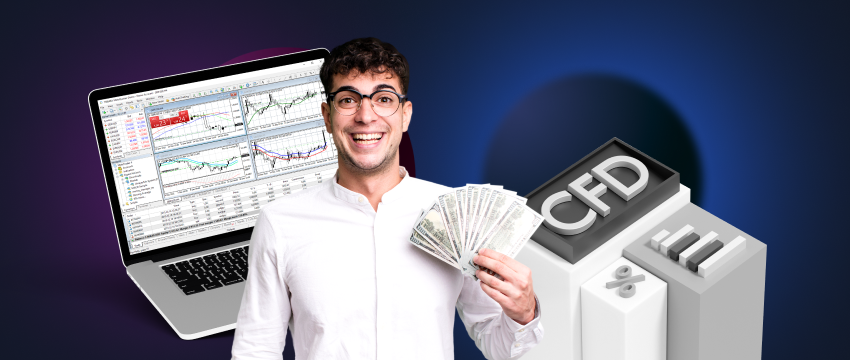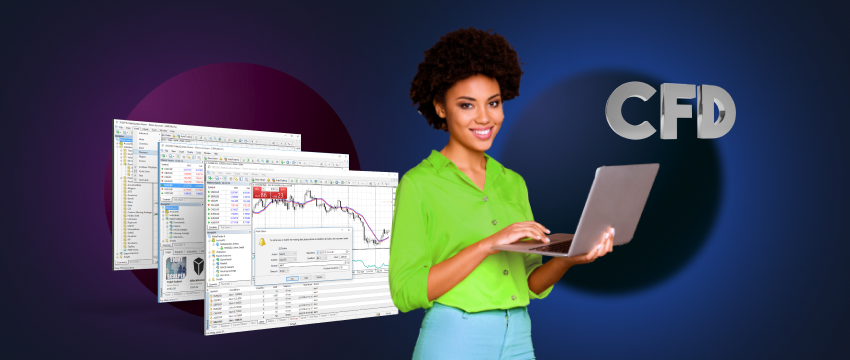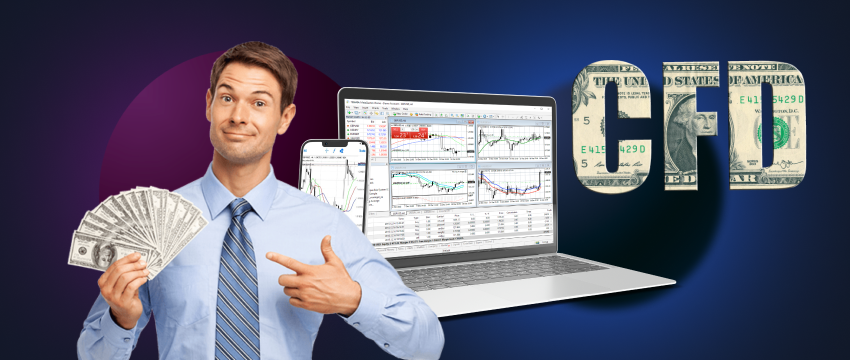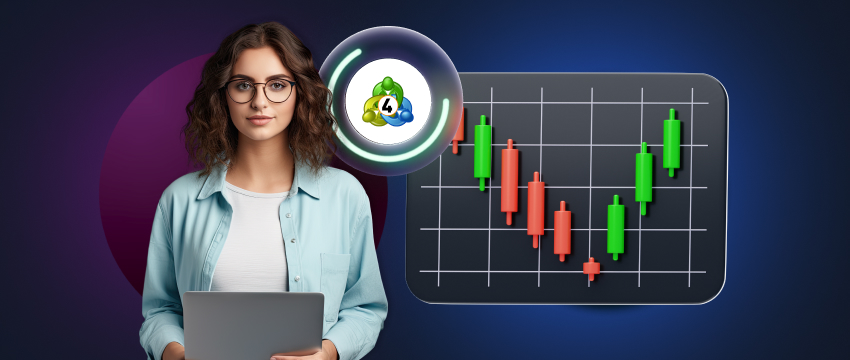With CFD trading, you can trade and potentially profit from changing asset prices, without really owning the assets. Leverage allows you to trade a smaller portion of the total trade amount while taking on larger trading positions with CFDs.
Because of the advantages they provide to traders, CFDs have become more and more popular in recent years. CFD trading, however, also carries some risk. But there are certain rules you must adhere to in order to profit from CFD trading and boost your earnings.
Let’s examine some of the top key CFD trading rules that all traders need to be aware of.

Top key CFD trading rules
1. Expand your understanding of CFD trading
It is essential that you comprehend CFDs and how they work before you get into trading.
Contracts for difference, or CFDs, are derivative products that let you speculate on a variety of international markets, including shares, indices, commodities, and forex, without possessing the underlying asset. This means that you can speculate on markets that are both rising or falling. You can go long (buy) if you think the price will rise, and you can go short (sell) if you think it will fall.
Since CFDs are a leveraged product, you can open a position with just a small down payment, or “margin,” to start trading. Leverage can increase profits, but it can also increase losses, which includes losses that exceed your deposits for specific positions. The entire size of your position determines your revenues and expenses.
Before you start using CFDs, you should be aware of the following fundamentals:
A CFD is a contract between a trader and a broker with CFDs, you can trade stocks, gold, forex and commodities with a CFD. Traders can trade an asset’s future price movements without worrying about an expiration date. CFDs have leverage as high as 1000:1, making them one of the most leveraged products.
2. Create a solid CFD trading plan
Create a trading strategy and follow it through. To assist in making more profitable trades, your trading strategy should include clear guidelines and techniques. Set profit targets, define your risk tolerance, and establish money management standards.
Include clear objectives in your strategy. Ensure that you choose elements of your trading plan with your long-term goals in mind.
You can clearly see how, what, when, and why to trade with the help of a trading plan. It will assist in shaping your behaviour and preventing the mistake of making choices based solely on feelings. Each trader ought to employ a unique trading approach. Always adjust a plan to suit your own goals and risk tolerance, even if inspired by someone else.
The following are the key points that your trading plan should address:
- Inspiration
- Time commitment
- Trading objectives
- Risk tolerance
- Accessible funds
- Techniques for risk management
- Availability of financial markets
- Trading strategies
- Keeping records
A trading strategy describes the type of trading you plan to do, the tools and indicators you may use, and the process you will follow for entering and exiting trades. The amount of time you want to invest in market monitoring will determine your approach. Depending on which strategy appeals to you, you can use a variety of trading styles, such as scalping, swing trading, and day trading.
Adhering to your CFD trading strategy is of the highest priority, as trading within the parameters you have established will reduce the likelihood of trading based on fear or greed. Understanding when your trading strategy is not effective is equally important. You can accomplish this by back-testing your trading strategy and keeping a record of your profitable and unsuccessful trades.

3. Consider market analysis when scheduling trades
When trading CFDs, the actual asset that you are trading with has a significant impact on the prices. For this reason, in order to potentially make profitable CFD trades, you should monitor and analyse the market carefully. For instance, you must research the commodities market and the past price movements of oil if you are trading it as a commodity using CFDs. Any news about oil in the world affects CFD prices, which can be rising or falling.
The kind of analysis you will employ to determine market entry and exit points must be chosen while developing your CFD trading strategy. Technical and fundamental analysis are the two forms of analysis used by traders.
Outside events and influences that are the focus of fundamental analysis include macroeconomic data, corporate announcements, and breaking news. Technical analysis, on the other hand, uses past price charts to forecast a market’s future course.
While you can use each type of analysis separately, combining the two is more common.
4. Use risk management techniques
When trading CFDs, using stop-loss orders ensures that your losses are kept to a manageable level. To find the stop-loss level, examine the past prices and movements of the asset you are trading. The stop loss order can be placed exactly below the market price of the CFD if you intend to go long, or right above the market price if you plan to short the trade.
Stops and limits are frequently used to manage risk in a position. These might help in maintaining capital by pre-defining the trade’s exit levels. A stop-loss order instructs your forex broker to terminate your trade at a price that is lower than the going rate in the market. It is important for you to consider how much money you are willing to lose before ending a trade, and adjust your stop-loss as necessary.
A limit close order is another option. It closes at a price that is better than the going rate in the market. This stops trading when you reach a predetermined profit threshold, safeguarding your investment from unfavourable fluctuations in the market.

5. Practice on a demo account
Opening a demo account and practising making trades with virtual money is a great way to test your trading strategy if you don’t feel ready to trade on live markets. You can experience live markets risk-free and without any cost when you open a demo account. To obtain a genuine understanding of how CFD trading operates, the majority of CFD brokers provide a demo account that can be accessed at no cost.
Make sure you familiarise yourself with the markets you can access and the financial terms used when you explore the demo account. You can strengthen your knowledge on CFDs by taking trading courses, such as those provided by T4Trade, if there is anything you do not understand.
After your confidence has grown, you can open a live account and start applying what you’ve learned.
6. Monitor your positions
Even though you may have set limits and stops, it is imperative that you regularly evaluate your positions. This will help you recognise issues or opportunities quickly and inspire you to act appropriately when necessary.
Additionally, it is crucial to confirm that you have enough money in your account to cover the entire maintenance margin needed to maintain the open position. You will be put on margin call if your account balance drops below the required minimum, and if you don’t fund your account, your position might be closed.
When you’re on the go, using a trading app is a great way to monitor your positions. With T4Trade, you can use the T4Trade Web Trader App specifically designed for tablets and smartphones, and receive price alerts delivered right to your inbox each time there’s a big move in the market.
Final thoughts
Although trading CFDs carries some risk, you can gain an important edge and lower your risk by investing time in expanding your knowledge.
Finding the ideal trading strategy is a continuous process that needs to be customised to your personality and trading objectives, as we have seen. Even the most experienced traders are constantly learning new things, so your education never stops. But you will be well on your way to becoming a profitable CFD trader if you adhere to your trading plan and these golden guidelines.
Disclaimer: This material is for general informational and educational purposes only and should not be considered investment advice or an investment recommendation. T4Trade is not responsible for any data provided by third parties referenced or hyperlinked in this communication.




